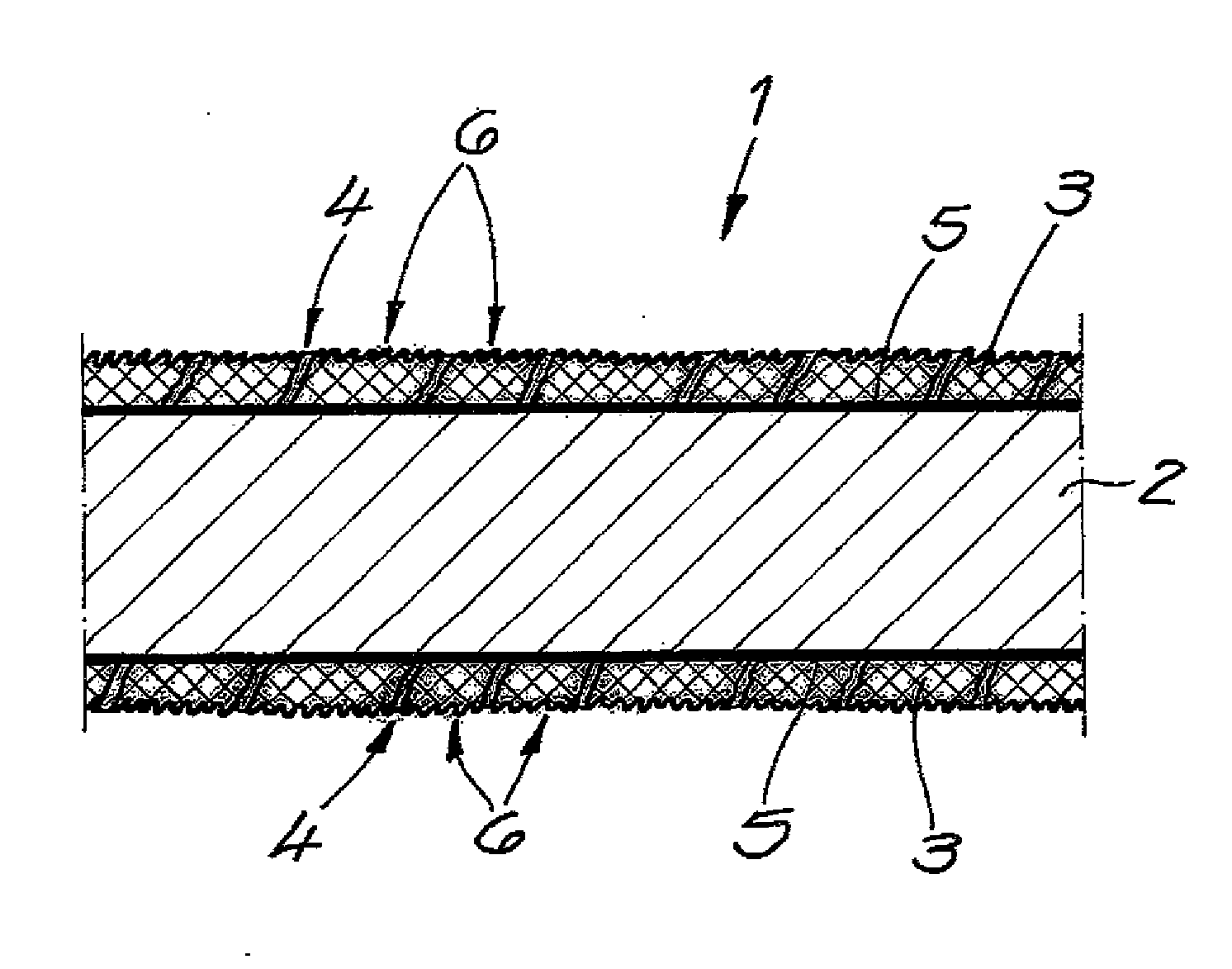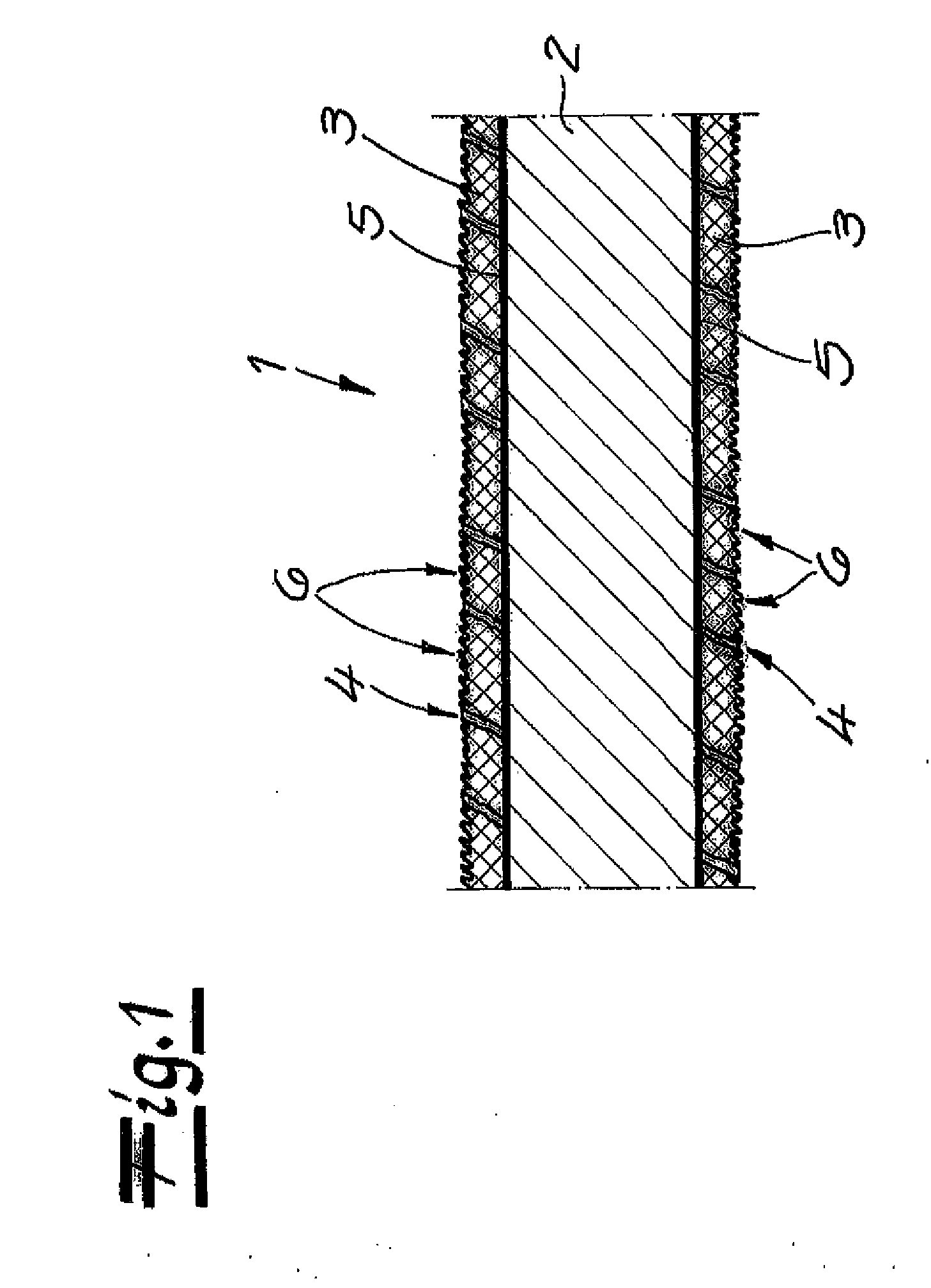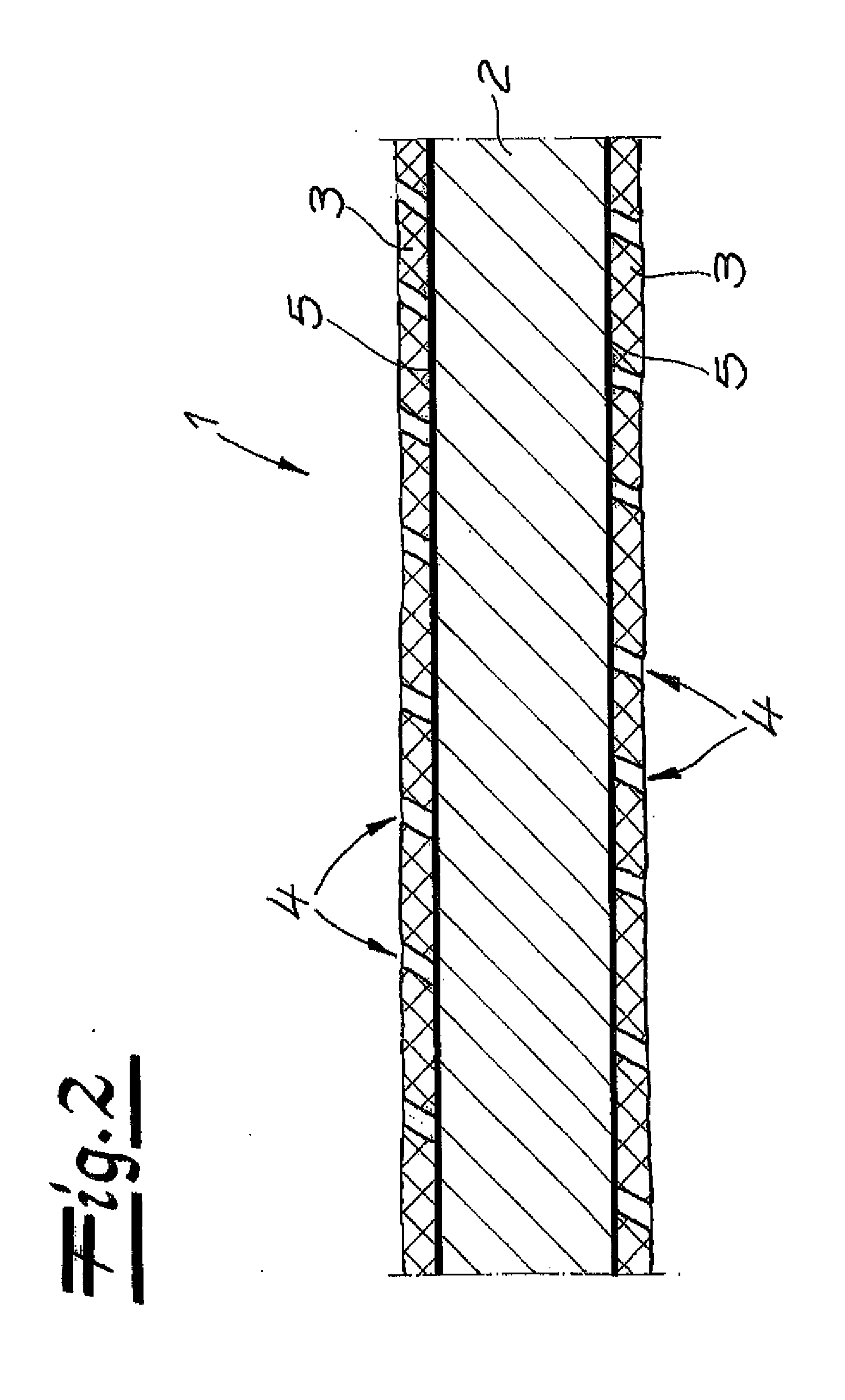Elastomer laminate and method for its production
a technology of elastomer laminate and production method, which is applied in the field of elastomer laminate, can solve the problems of over-extension of the entire coextrusion film length, laminate tear, etc., and achieve the effect of improving the elastic properties of the lamina
- Summary
- Abstract
- Description
- Claims
- Application Information
AI Technical Summary
Benefits of technology
Problems solved by technology
Method used
Image
Examples
Embodiment Construction
[0025]Referring now in detail to the drawings, laminate 1 shown in section in FIG. 1 has an elastomer carrier layer 2 composed of a thermoplastic elastomer and a microtextured cover layer 3 on both sides of the carrier layer. Microtextured cover layers 3 each consist of a polymer, which demonstrates a lower elasticity than the material of carrier layer 2. The microtexture of laminate 1 has been formed by stretching laminate 1 beyond the elasticity limit of cover layers 3, and elastic recovery of the stretched laminate 1. Microtextured cover layers 3 contain a plurality of pores 4 that are distributed essentially uniformly in the cover layer. Optionally, adhesion-imparting layers 5 can be disposed between elastomer carrier layer 2 and cover layers 3.
[0026]Elastomer carrier layer 2 preferably consists of a block copolymer selected from the group of SIS, SBS, SEBS, SIBS, or PEBA block copolymers. It can contain additions of non-elastic polymers and / or processing aids as well as additiv...
PUM
| Property | Measurement | Unit |
|---|---|---|
| Temperature | aaaaa | aaaaa |
| Temperature | aaaaa | aaaaa |
| Thickness | aaaaa | aaaaa |
Abstract
Description
Claims
Application Information
 Login to View More
Login to View More - R&D
- Intellectual Property
- Life Sciences
- Materials
- Tech Scout
- Unparalleled Data Quality
- Higher Quality Content
- 60% Fewer Hallucinations
Browse by: Latest US Patents, China's latest patents, Technical Efficacy Thesaurus, Application Domain, Technology Topic, Popular Technical Reports.
© 2025 PatSnap. All rights reserved.Legal|Privacy policy|Modern Slavery Act Transparency Statement|Sitemap|About US| Contact US: help@patsnap.com



